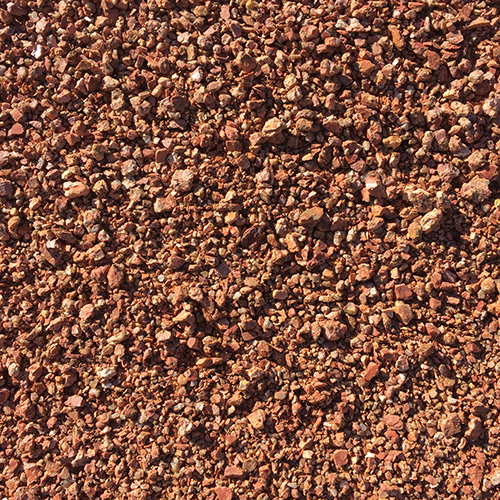
Stones and decorative rocks can enhance the overall look and feel of your landscape. They are a beautiful and affordable way to accent softscapes. With stone aggregates, you can create the ideal balance between hardscapes and softscapes.
All rocks are not created equal. Size, color and specific uses are some features that set them apart from each other. Here are four common rock aggregates widely used in landscapes.
1. Pea Gravel
Pea gravel has a smooth texture and rich natural color. It is composed of a variety of natural colors, making it a great companion for other stones and landscaping features.
Pros:
- Pea gravel has rounded edges that make it easy to walk on, perfect for pathways and play areas.
- It provides good drainage and controls erosion well.
Cons:
- Compared to other landscaping materials, pea gravel is less stable. It needs to be contained by edging materials such as brick, stones or metal edging. Mixing in stone dust or other fine aggregates may help stabilize pea gravel.
- Due to the lack of stability, pea gravel cannot provide a firm base for furniture.
2. River Rocks
River rocks are known for their smooth rounded texture. While pea gravel offers a wide variety of colors, river rocks have neutral attractive earth tones that complement most properties.
They are often used to edge flower beds, providing drainage areas within garden beds. River rocks are also widely used for paths and play areas.
Pros:
- River rock has high strength that can withstand temperature drops and physical impacts.
- Its natural appearance provides more opportunities for diverse landscape designs.
Cons:
- Laying river rock can take a lot of time and effort, especially for more complicated compositions.
- Weeding can be difficult with river rocks. Laying fabric down upon the base before installing river rocks helps to prevent weeds from growing.
3. Crushed Stone
Crushed stone is closely related to decomposed granite (DG), but these rocks are not crushed as finely as DG. Both are popular for contemporary landscapes, but crushed stone offers a crisper look than DG.
Pros:
- Crushed stone can be poured and compacted in any shape, providing design flexibility.
- Crushed stone can be easily tamped or rolled into place, creating a stable surface for areas such as driveways.
Cons:
- It may not be the best choice for play areas because of its rough edges.
- Crushed stone has the tendency to scatter and requires replenishing every few years.
4. Decomposed Granite
Decomposed granite is the natural byproduct of granite weathering. It is relatively affordable and available in a wide variety of colors and sizes. You can choose from 3 types of decomposed granite.
You can use decomposed granite in your landscape projects in many ways.
Pros:
- DG is very stable. Once compacted well, it provides a stable, even surface.
- It is highly permeable and handles water runoffs very well.
- DG is available in a wide variety of natural colors, providing a rustic appeal to landscapes.
Cons:
- Decomposed granite has the tendency to stick to shoes. Avoid using it near home entrances, or consider using doormats to keep the material from ruining your floor’s surface.
- Decomposed granite is not a maintenance-free material like concrete. It needs to be redressed and recompacted periodically.
Every aggregate has unique characteristics that make it the ideal material for certain projects. Combining two or more stone aggregates can provide a wide variety of landscape designs to perfectly complement different architectural layouts.
When it comes to decomposed granite and decorative granite boulders, Blessing Gravel has the widest selection of colors and sizes found nowhere else in Oklahoma. Contact us now to know more about our decomposed granite aggregate.
